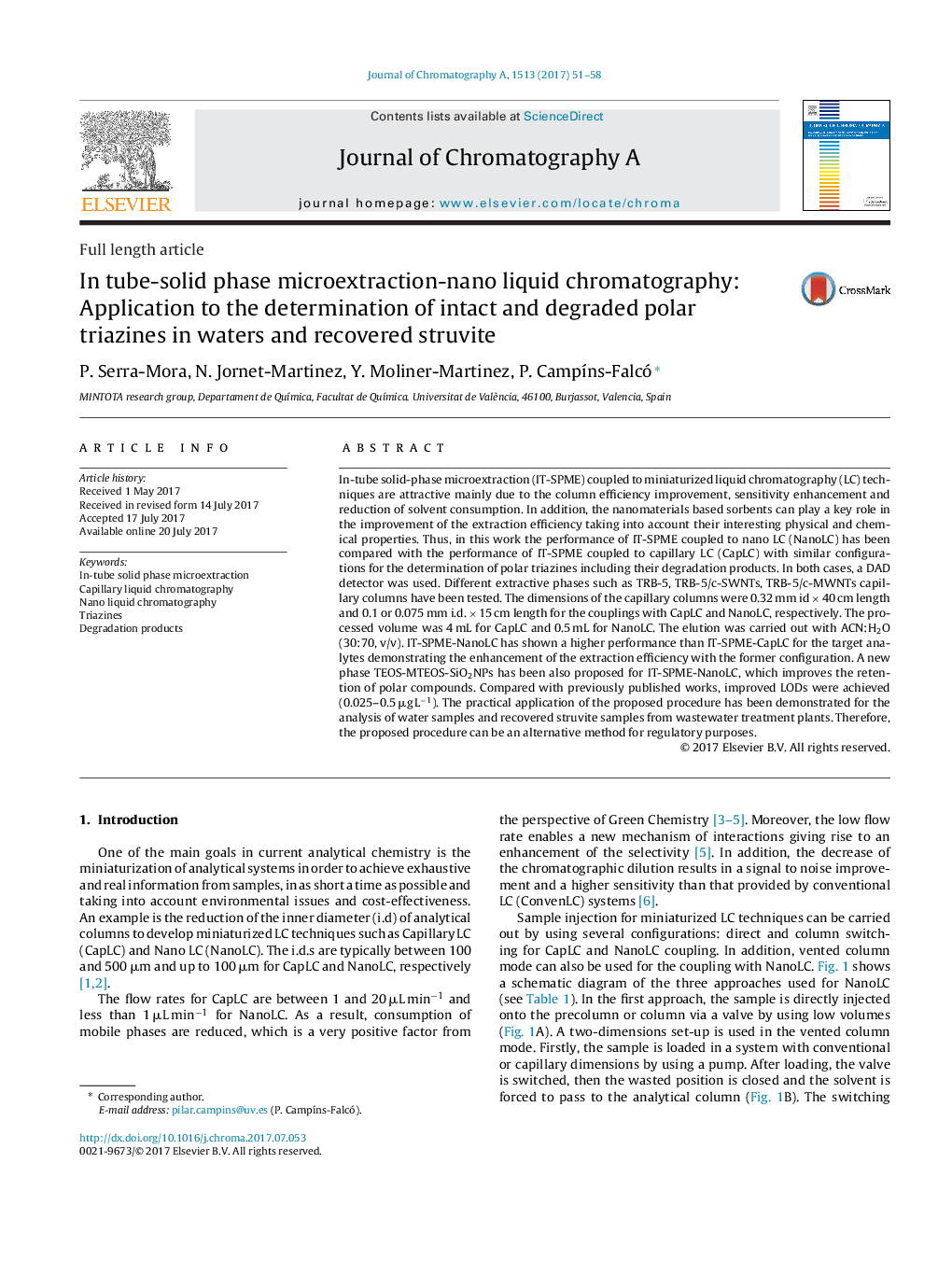| Article ID | Journal | Published Year | Pages | File Type |
|---|---|---|---|---|
| 5135287 | Journal of Chromatography A | 2017 | 8 Pages |
â¢On-line coupling in nano liquid chromatography is proposed.â¢Several phases containing nanomaterials are assayed.â¢Improved results are obtained for IT-SPME.â¢Polar triazines have selected as target organic compounds.
In-tube solid-phase microextraction (IT-SPME) coupled to miniaturized liquid chromatography (LC) techniques are attractive mainly due to the column efficiency improvement, sensitivity enhancement and reduction of solvent consumption. In addition, the nanomaterials based sorbents can play a key role in the improvement of the extraction efficiency taking into account their interesting physical and chemical properties. Thus, in this work the performance of IT-SPME coupled to nano LC (NanoLC) has been compared with the performance of IT-SPME coupled to capillary LC (CapLC) with similar configurations for the determination of polar triazines including their degradation products. In both cases, a DAD detector was used. Different extractive phases such as TRB-5, TRB-5/c-SWNTs, TRB-5/c-MWNTs capillary columns have been tested. The dimensions of the capillary columns were 0.32 mm id Ã 40 cm length and 0.1 or 0.075 mm i.d. Ã 15 cm length for the couplings with CapLC and NanoLC, respectively. The processed volume was 4 mL for CapLC and 0.5 mL for NanoLC. The elution was carried out with ACN:H2O (30:70, v/v). IT-SPME-NanoLC has shown a higher performance than IT-SPME-CapLC for the target analytes demonstrating the enhancement of the extraction efficiency with the former configuration. A new phase TEOS-MTEOS-SiO2NPs has been also proposed for IT-SPME-NanoLC, which improves the retention of polar compounds. Compared with previously published works, improved LODs were achieved (0.025-0.5 μg Lâ1). The practical application of the proposed procedure has been demonstrated for the analysis of water samples and recovered struvite samples from wastewater treatment plants. Therefore, the proposed procedure can be an alternative method for regulatory purposes.
